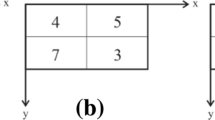Abstract
Driver’s drowsiness is considered as a major reason behind accidents on road, around the globe. Driving nonstop for a long period of time will cause accidents. The consequences of drowsy state are the same as alcohol, and it will create a driver’s driving inputs poorer, destroy the driver’s reaction times, and blur driver’s thought processes. To prevent such disastrous situations, a real-time driver monitoring system is implemented using OpenCV, where the aspect ratios of extracted contour features of eye and mouth are measured, and an alarm is generated. With EAR 0.25 and MAR 0.75, the results show that the alarm is generated for the blinks. The robustness of the implementation has been verified by changing the EAR and MAR, values, and best results are given for the EAR 0.25 and MAR 0.75.
Access this chapter
Tax calculation will be finalised at checkout
Purchases are for personal use only
Similar content being viewed by others
References
McDonald A, Lee JD, Schwarz C, Brown TL (2018) A contextual and temporal algorithm for driver drowsiness detection. Accid Anal Prev 113:25–37
Arjun A, Singh T (2017) Analysis of image segmentation methods on Amrita’s Indian side face profile database. In: 2017 International conference on communication and signal processing (ICCSP), Chennai, pp 0952–0958. https://doi.org/10.1109/iccsp.2017.8286512
Wang Z, Zheng R, Kaizuka T, Shimono K, Nakano K (2017) The effect of a haptic guidance steering system on fatigue-related driver behavior. IEEE Trans Hum-Mach Syst 47(5):741–748. https://doi.org/10.1109/thms.2017.2693230
Ji Y, Wang S, Lu Y, Wei J, Zhao Y (2018) Eye and mouth state detection algorithm based on contour feature extraction. J Electron Imaging 27(5):051205. https://doi.org/10.1117/1.JEI.27.5.05120
Kumar A, Patra R (2018) Driver drowsiness monitoring system using visual behavior and machine learning. In: 2018 IEEE symposium on computer applications & industrial electronics (ISCAIE), Penang, pp 339 344. https://doi.org/10.1109/iscaie.2018.8405495
Jie Z, Mahmoud M, Stafford-Fraser Q, Robinson P, Dias E, Skrypchuk L (2018) Analysis of yawning behavior in spontaneous expressions of drowsy drivers. In: 2018 13th IEEE international conference on automatic face and gesture recognition (FG 2018), **’an, pp 571– 576. https://doi.org/10.1109/fg.2018.00091
Tabrizi PR, Zoroofi RA (2008) Open/Closed eye analysis for drowsiness detection. In: 2008 First workshops on image processing theory, tools and applications, sousse, pp 1–7. https://doi.org/10.1109/IPTA.2008.4743785
Shriram KV, Priyadarsini PLK, Gokul M, Subashri V, Sivaraman R (2013) A novel approach using T.H.E.S methodology for CBIR. In: 2013 International conference on signal processing, image processing & pattern recognition, Coimbatore, pp 10–13. https://doi.org/10.1109/icsipr.2013.6497781
Ramasamy M, Varadan VK (2016) Real-time monitoring of drowsiness through wireless Nano sensor systems. In: Proceeding of SPIE 9802, nanosensors, biosensors, and info-tech sensors and systems, 98021G (15 July 2016). https://doi.org/10.1117/12.2219511
Sobottka K, Pitas I (1998) A novel method for automatic face segmentation, facial feature extraction and tracking. Department of Informatics, University of Thessaloniki 54006, Thessaloniki, Greece. https://doi.org/10.1016/s0923-5965(97)00042-8
Krishnan A, Jayadevan P, Panicker JV (2017) Shadow removal from single image using color invariant method. In: 2017 International conference on communication and signal processing (ICCSP), Chennai, pp 0583–0587. https://doi.org/10.1109/iccsp.2017.8286425
Author information
Authors and Affiliations
Corresponding author
Editor information
Editors and Affiliations
Rights and permissions
Copyright information
© 2021 The Author(s), under exclusive license to Springer Nature Singapore Pte Ltd.
About this paper
Cite this paper
Sai Sandeep Raju, V.T., Belwal, M. (2021). Driver Drowsiness Detection. In: Smys, S., Palanisamy, R., Rocha, Á., Beligiannis, G.N. (eds) Computer Networks and Inventive Communication Technologies. Lecture Notes on Data Engineering and Communications Technologies, vol 58. Springer, Singapore. https://doi.org/10.1007/978-981-15-9647-6_77
Download citation
DOI: https://doi.org/10.1007/978-981-15-9647-6_77
Published:
Publisher Name: Springer, Singapore
Print ISBN: 978-981-15-9646-9
Online ISBN: 978-981-15-9647-6
eBook Packages: EngineeringEngineering (R0)




